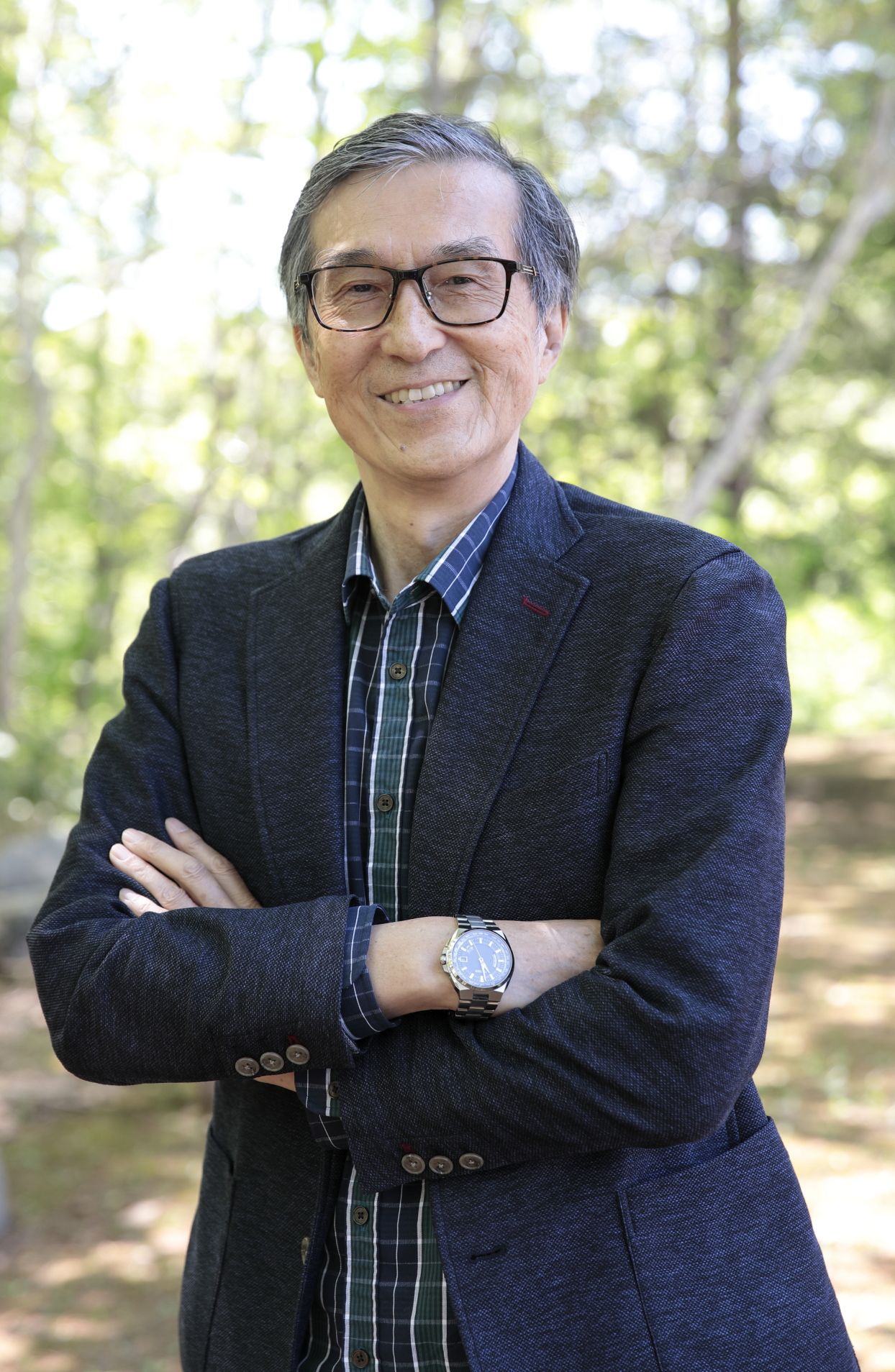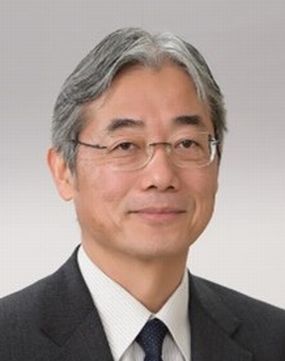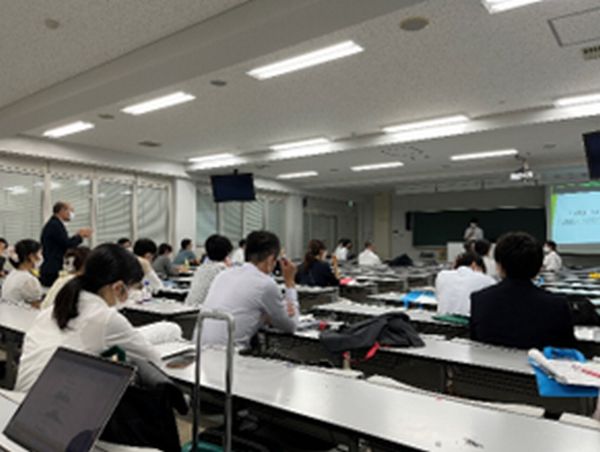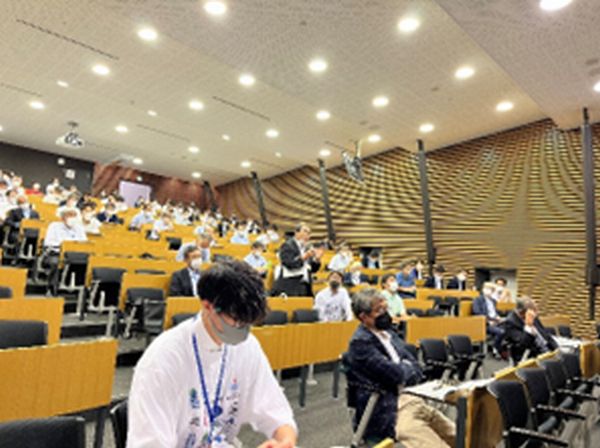IAC News
IAC News No.123, January 2023
Japan Society of Civil Engineers International Activities Center January 10, 2023 IAC News No.123
Best Wishes for the New Year
Sustainability and Japanese Civil Engineering

Tamon Ueda
(110th President of the Japan Society of Civil Engineers)
*Photographer: Rumiko Ito
Happy New Year!
The two once-in-a-century situations of the COVID-19 pandemic and the invasion of Ukraine, which I mentioned in my address to mark my inauguration as president, still show no signs of coming to a fundamental close. It is not exactly an upbeat state of affairs to enter the new year. However, what is clear to me from looking at the long history of human civilization is that I expect human wisdom to somehow overcome these difficulties.
As the president of JSCE, I often discuss matters with stakeholders of other societies. The fact that almost all societies both in Japan and overseas show an interest in the Sustainable Development Goals (SDGs) and, in particular, Carbon Neutrality (CN), which are global challenges of the 21st century, has left a strong impression on me. As pointed out by those inside and outside the construction sector, infrastructure will play a significant role in achieving the SDGs and CN. Building infrastructure has the positive aspects of contributing to many SDGs such as eradicating poverty, providing opportunities for education, and eliminating gender discrimination. Also, the reduction of all carbon dioxide emissions by nearly one-third relates to the construction work of building infrastructure as well as its maintenance and repair. While not much can be said at present, the various facilities necessary for CN (facilities for the cement and steel manufacturing industry to achieve CN, carbon dioxide storage facilities, renewable energy production facilities, etc.) will also play a major role as infrastructure. JSCE must also be aware of this and play a leading role in Japan and overseas.
For this, the competency of Japanese civil engineering, which supports JSCE, will be an important factor. This is because the substance and quality of JSCE’s role are dependent on civil engineering competency. As my President Project, efforts to self-check the competency of Japanese civil engineering are being led mainly by young researchers and engineers. Alongside this is the JSCE Magazine’s special feature “Panoramic perspective of Japan’s civil engineering community and technology,” which takes a close look at the competency of Japanese civil engineering from the perspective of foreigners and Japanese overseas and foreigners in Japan. It also highlights new viewpoints about diversity and inclusion (D&I), which is one of the markers of civil engineering competency. Looking at the matter from an overseas perspective, we can begin to see the strengths and weaknesses of Japanese civil engineering that are not immediately apparent to us.
Civil engineering is also expected to contribute in relation to the problems surrounding the invasion of Ukraine, which I mentioned in the opening. This contribution is to reconstruct the destroyed infrastructure. It is without a doubt that the technologies developed in Japan used in efforts to recover from natural disasters will also be useful in Ukraine. We must utilize Japanese civil engineering technologies in countries across the world for civil engineering to also contribute to the SDGs and CN initiatives. It is hoped that grasping the capacity of Japanese civil engineering on the global stage will lead to more domestic civil engineers flourishing internationally.
The 12th Civil Engineer’s Lounge “DOBOKU”
The Professional Development and Education Program Group of the International Activities Center regularly holds Civil Engineer’s Lounge “DOBOKU” for young civil engineers to deepen their understanding of overseas construction and get them interested, attracted, and inspired to engage in overseas construction projects. Continuing from the Civil Engineer’s Lounge “DOBOKU” in March of this year, this time we planned an online virtual construction site tour as the central topic of discussion. The site tour was of the construction site for a hydroelectric power station in the north of Sumatra, Indonesia. After an outline of the construction work was explained by Mr. Takayuki Sakai (International Civil Engineering Division, Shimizu Corporation), attendees watched drone footage while listening to explanations by Mr. Fumiya Kato (International Civil Engineering Division, Shimizu Corporation) about the construction work outside the tunnel and Mr. Koji Tanaka (International Civil Engineering Division, Shimizu Corporation) about the groundwork. The drone footage was like having one’s very own bird’s-eye view of the site, and the talk provided a real sense of being inside the tunnel and the large cavity of the underground power station.
During the talk, which was aided by the use of photographs shown in chronological order, attendees were left jaw-dropped by the sheer amount of construction work to clear the open jungle and build a construction road while laying temporary bridges over rivers. The attendees were able to get a sense of how difficult it is to carry out civil engineering construction work in remote areas. Challenges during this construction work included crushing rocky tunnel excavation waste at a rock crushing plant to produce concrete aggregates by themselves, securing an area for a water intake facility by diverting the Asahan River, which has a flow rate of 110 tons per second, in one go, building a dormitory with a mosque and a separate building for isolation as part of measures against the spread of COVID-19, and ensuring doctors and nurses were stationed at the site.
Attendees asked questions and gave their thoughts on the sheer amount of materials, the difficulty of procurement, and the management of local workers. Although the workers would follow the Japanese engineers’ instructions properly then and there, they would often revert back to their old ways the next day, and so apparently it was necessary to repeat the same things over and over to drill home matters regarding safety and quality. The talk also shared anecdotes of how difficult the outside tunnel construction work was during the rainy season, with the compaction of backfill soil being particularly challenging.
This event was held both in person at the JSCE headquarters’ auditorium and online (the speakers participated from Sumatra), involving 4 in-person attendees and 15 online attendees. I sincerely hope the COVID-19 pandemic will end soon and we can go back to being able to chat and enjoy snacks together face-to-face.
【Reported by Hidemei Yanagai, Professional Development and Education Program Group, IAC】
The Committee on Global Environment

Hiromune Yokoki
(Chair of the Committee on Global Environment)
In 2022, the Committee on Global Environment celebrated its 30th anniversary since its inauguration back in 1992. Since its establishment, the Committee on Global Environment has led the Japan Society of Civil Engineers regarding global environmental issues and, whilst cooperating closely with various committees, has proposed, evaluated, and researched policies and concrete methods contributing to the resolution of global environmental issues through research and technology across a wide range of fields in civil engineering. I will discuss the committee’s recent efforts of “The Global Environment Symposium” and the focused discussions held under the theme: “What the Committee on Global Environment Aims to Achieve Following Its 30th Anniversary.”
● “The Global Environment Symposium”
Since its inception in 1993, research results from many researchers, engineers, and students have been presented at the annual “Global Environment Symposium”. These results have also been published annually as the Journal of JSCE, Div. G (Environmental System and Engineering). The symposium and journal also accept English presentations and manuscripts.
While the symposium has been held online since 2020 due to the COVID-19 pandemic, in August 2022, it was held in person for the first time in two years at the School of Engineering at Hokkaido University in Sapporo, Hokkaido. Research presentations and poster presentations were made after taking sufficient measures to prevent the spread of infection. There was also the general symposium “Japan’s Initiatives and What the Future Holds in Light of Energy Issues and Climate Change Facing the World,” and the event proved to be a great success.
● Focused Discussions: “What the Committee on Global Environment Aims to Achieve Following Its 30th Anniversary”
Celebrating its 30th anniversary, the committee tried to hold in-depth discussions on what we have achieved as members over the years and what we will aim to achieve going forward, but it was not easy to create an opportunity for committee members, organizers, and stakeholders to get together and discuss matters due to the COVID-19 pandemic. The pandemic finally eased up in the Autumn of 2022, and we held focused discussions twice in both an in-person and online format to share views on a whole range of matters regarding the future running of the committee. The first discussion was held on October 21, and attendees shared a broad range of views and ideas. The second discussion, which was held on November 18, pulled together opinions on the future running of the committee. We engaged in a total of 12 hours of discussions over the two occasions, and they proved to be very productive. I intend to compile everyone’s views and use them to establish a plan for efforts from the next fiscal year onward.


The Global Environment Symposium
【Reported by Hiromune Yoyoki, Chair of the Committee on Global Environment】
Updates
◆JSCE-ASCE Infrastructure Resilience Research Group
https://www.infraresil.jp/
◆The 4th International Conference on Transportation Infrastructure and
Sustainable Development (TISDIC 2023)
https://tisdic2023.dut.udn.vn/
◆The International Infrastructure Archives
– A Compilation of Japan’s Greatest Projects in Transfer of Civil Engineering Technology in Service –
http://www.jsce.or.jp/e/archive/
・The Asahan Hydroelectric Power Generation Project
https://www.jsce.or.jp/e/archive/project/pj15.html
◆Call for JSCE Award Nominations : "International Lifetime Contribution Award" and "International Outstanding Collaboration Award"
https://committees.jsce.or.jp/kouken_sho/node/18
◆Civil Engineering Design Prize, JSCE
http://design-prize.sakura.ne.jp/
◆IAC “News Pick Up!!” on the JSCE Japanese website
https://committees.jsce.or.jp/kokusai/iac_dayori_2023
◆Summary of featured articles in JSCE Magazine Vol. 108, No.1 January 2022
http://www.jsce-int.org/pub/magazine
◆Journal of JSCE
https://www.jstage.jst.go.jp/browse/journalofjsce
◆ASCE 2023 Conference Infrastructure Innovation & Adaptation for a Sustainable & Resilient World
https://www.icfm9.jp/index.html
◆The 4th Asian Concrete Federation (ACF) Symposium on Emerging Technologies for Structural Longevity (ACF2022_ETSL): https://acf2022.aconf.org/index.html
◆The 9th International Conference on Flood Management (ICFM9)
https://www.icfm9.jp/index.html
◆Call for Innovation Spotlight speakers - Breakwaters 2023
https://committees.jsce.or.jp/kokusai/node/311
◆Integrated Flood Risk Management Basic Concepts and the Japanese Experience
https://www.routledge.com/Integrated-Flood-Risk-Management-Basic-Concept...
Subcription
The IAC News is one of the communication tools to share information and ideas with the members. We would like to invite you, your friends and colleagues to join the communication and to subscribe the IAC News. Please register online: (http://www.jsce-int.org/node/150). We look forward to meeting you.
